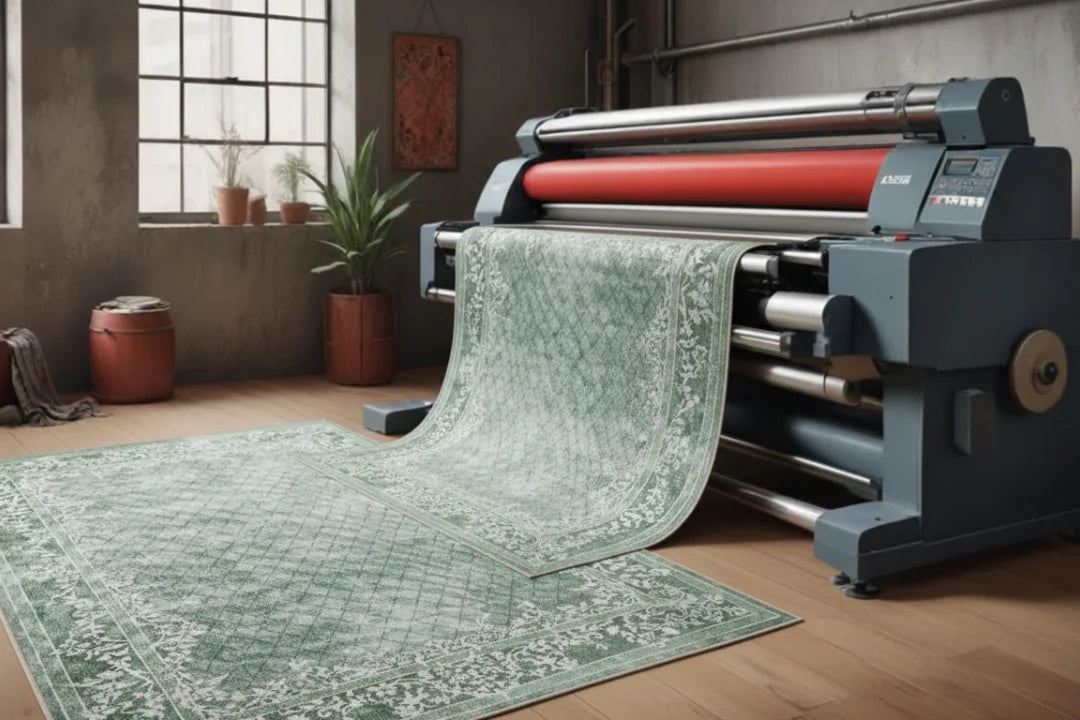
Printed Rug Technology: The Modern Revolution in Floor Design

Printed rugs use modern printing processes to transfer artwork directly onto carpet surfaces. Unlike hand-tufting or traditional weaving, printed solutions rely on dye-sublimation, inkjet printing, and industrial finishing lines to create highly detailed patterns and photographic imagery. These methods open up near-limitless visual options for homes, hotels, exhibitions, and branded spaces.
How Printed Rugs Are Made
Common modern approaches include:
- Dye sublimation: An image is printed on transfer paper and then heat-pressed so the dye sublimes into the polyester surface. This method produces vivid, permanent colors on synthetic bases. (See: Dye-sublimation printing - Wikipedia.)
- Digital inkjet printing: Large-format inkjet heads deposit inks directly onto a textile backing. Industrial lines can include steaming, washing, and heat-setting to increase durability. Industry suppliers and installers describe large-scale digital installations. (Examples: M2 Carpets - digital rug products, Prinwork - digital rug printing.)
- Hybrid finishing: After printing, processes like lamination, anti-slip backing, and edge overlocking are added for performance and longevity. See practical product descriptions from manufacturers. (Example: Ferahnur Rugs - digital print carpets.)
Early and Industrial Developments
Advances in carpet printing have a history. Early rotary and injection-based systems improved repeatability and production speed. Modern industrial print lines from specialized equipment makers enable wide-format production and integrated finishing stages, these are used by companies producing custom and large-format printed carpets. For press coverage and technical background on industrial lines, see reporting and product announcements. (See: Texintel, TextileWeb.)
Frequently Asked Questions — Printed Rug Benefits
- Q: Why are printed rugs good for customization and creative designs?
- A: Printed rugs allow precise reproduction of any artwork, photograph, logo or pattern, including photographic-quality prints. Digital processes remove the limits of repeat patterns and let makers produce one-off or short-run custom designs quickly. See examples from M2 Carpets and Ferahnur Rugs.
- Q: Do printed rugs offer faster production compared with traditional methods?
- A: Yes. Digital printing cuts out long screen- or dye-preparation steps used in older methods, enabling faster setup and print-on-demand. See more on TextileWeb.
- Q: Are printed rugs consistent in quality?
- A: Digital printing gives high fidelity and repeatability: the same file printed repeatedly produces nearly identical results. Industrial finishing (washing, steaming, heat-setting) further secures color and durability. Learn more at Prinwork.
- Q: Where are printed rugs commonly used?
- A: Printed rugs suit residential interiors, hotels, exhibitions, retail pop-ups, and event branding because of their graphic possibilities and short lead times. For applications, see Ferahnur Rugs.
Sources and Further Reading
- M2 Carpets — digital rug product examples
- Ferahnur Rugs — digital print carpets & product details
- Prinwork — digital rug printing
- TextileWeb — press on carpet printing
- Texintel — industry news and press
- Dye-sublimation printing — Wikipedia
- Community discussion: printed vs tufted rugs (Reddit)

Notes for Buyers and Designers
- Close-up photos of the print and edge finishing.
- Information on material (polyester, wool blend, etc.) and backing type.
- Details on finish steps such as washing, steaming, and anti-slip backing.
Check our printed rug collection from here.
